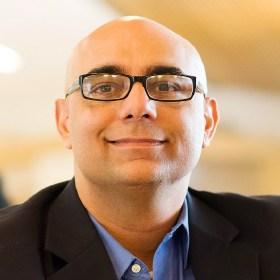Sajid Ahmed founded WISE Healthcare to address inequities with a particular focus on underserved populations, prisons, and safety nets with virtual-care-as-a-service offerings.
Today, the startup works across all units of the California Department of Corrections and Rehabilitation, Inland Empire Health Plan, and with others.
Health Evolution interviewed Ahmed about the company’s virtual care as a service, workflow engineers, scaling from one to 34 sites is less than six weeks for a client, why he doesn’t use the phrase telehealth, and more.
What is WISE Healthcare’s origin story? Or the inspiration that fuels you as CEO?
The best way to describe why the company was started is that I wanted to build a mission-driven organization by taking everything we’ve learned about what it means to provide health care services to an underserved population, including all the lessons learned from my career on the provider side as CIO of Martin Luther King Jr. Healthcare Corporation and being one of the folks to launch telehealth at LA Care Health Plan. On the public health side, the expectation is that the underserved populations get access to high-quality specialty care in a timely manner. Health plans contract with us because we represent a network adequacy solution for them. So, the purpose is to provide health care services, virtual care specifically, and to focus on underserved populations because the availability of quality care is disproportionately low there. In addition to underserved communities, we work with prisons, safety net providers, and dual-eligible Medicare-Medicaid populations. That’s why “A Force of New” is our intentional tagline because we want to be a force for improving access to quality care for these populations utilizing our singular focus on virtual care.
How does the technology underlying virtual-care-as-a-service work? What should CEOs understand about it?
Our business model is virtual-care-as-a-service and that includes three components that give us an advantage. We have our own providers, HubMD. Our chief medical officer is CEO of that medical group in the state of California. This isn’t just any old medical group. We have 161 board certified, personally invited, trained and curated specialists. It’s a multi-specialty virtual medical group. We bring that along with our own virtual care technology platform augmented with AI. And the secret sauce is our workflow engineers. WISE, in fact, is an acronym for Workflow, Innovation, Science and Engineering. We are made up of providers, technologists and professional services specialists who serve as workflow engineers. This means that we don’t just launch the service and move on, we stick around to support our clients for a year.
We combine those three components and that has been the core of our success. That can be seen in our work with Inland Empire Health Plan, which engaged WISE as a sole source for implementation of a virtual care platform throughout their network. IEHP specifically wanted the workflow engineers to handhold the implementation process to ensure it did not ultimately fail as is common with many other implementations whether it’s implementation of an EHR or a telehealth program. We don’t simply drop the technology in place and go. We are here to provide a service. Our providers and workflow engineers work very closely with the primary care providers, PAs, NPs and their staff, and we stay with that practice or organization for a year.
Workflow engineer is a role that some CEOs may not be familiar with so can you describe the discipline in more detail?
We began the company with workflow engineers and designed their role by combining lean processes with design thinking. Workflow engineers work on site with our client’s medical clinics, assessing their individual workflows and showing providers and staff how our virtual care technology will fit into their processes. After the initial implementation, workflow engineers follow up to ensure each clinic’s workflow transitions are going smoothly. That was the impetus of providing virtual-care-as-a-service to make telehealth programs successful. We also have our own medical group of specialists similar to Teladoc or Amwell. But unlike a Teladoc or Amwell, all of our physicians are board-certified specialists and focused on underserved populations. We also innovate with our clients on how we contract, credential, and get paid by our clients, pushing to get away from just submitting claims because we want a direct service that can leverage our model.










